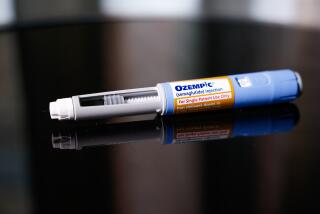How to drive down a population’s hypertension? Keep it simple

Almost 1 in 3 American adults is believed to have high blood pressure, which increases the risk of stroke, heart attack, dementia and such non-life-threatening problems such as erectile dysfunction. In principle, the condition is easy to diagnose, and physicians have a highly effective and growing arsenal of medications available to drive blood pressure down.
But hypertensive patients still go undiagnosed. And even when they are diagnosed, physicians often struggle to get patients to do what they must to control their high blood pressure. The result: Fewer than half of Americans with hypertension have it under control. So rates of disability, death and healthcare spending are far higher than they need to be.
What would it take to change that? A new study in the Journal of the American Medical Assn. finds that driving down high blood pressure in a population of patients takes coordination, consistency, persistence and a dose of simplicity. As research findings go, these are not sexy. But the lives saved could be legion.
In 2001, Kaiser Permanente Northern California, an integrated healthcare delivery system with more than 2.3 million members, devised a system-wide quality-improvement program to improve the management of hypertension among its patients.
They flagged the records of patients with hypertension and created a registry, the better to keep track of them. Each unit reported on the management of its hypertensive flock--every patient--at least once every three months.
Streamlining an alphabet soup of blood pressure medications--ACE inhibitors, beta blockers, diuretics with different mechanisms of action--physicians were urged to follow a single set of hypertension management guidelines that rigorously reflected the research on lowering blood pressure. Two to four weeks after a patient got a diagnosis and prescription, they were brought back to visit--free of copayment--with a medical assistant, who could dial up or down medication and ensure it was being taken correctly.
And finally, in 2005, as soon as it became available, Kaiser Permanente adopted a medication that combined two types of blood pressure medication often used in tandem--lisinopril and hydrochlorothiazide--into a single pill. The idea was to make adherence to a medication regimen as simple as possible for patients.
Over the next eight years, Kaiser Permanent Northern California measured the impact of its program, and found that by 2009, its initiatives had brought high blood pressure under control in 80% of hypertensive patients--up from a starting point of 43.6% in 2001.
That’s a dramatically better rate of improvement than was seen in national and California samples of patients not under the Kaiser Permanente plan. During the same period, national rates of hypertensive patients whose blood pressure was well managed went from 55.4% to 64.1%. And in California, that rate went from from 63.6% in 2006 to 69.4% in 2009.
The study underscores that although drugs and doctoring are important, nudging some risk factors in populations of patients will no doubt need “systems-level approaches” as well. That’s a lesson that should become more important as the Affordable Care Act brings more Americans into insurance plans, and as public health authorities try to get a grip on other risk factors likely to require vigilance by healthcare providers, such as obesity or diabetes.







